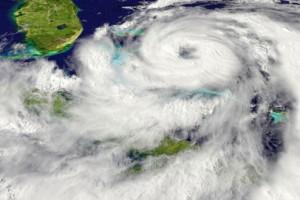 It's a common sight in coastal communities under a hurricane alert - convoys of utility, power, refrigerated and supply chain trucks heading toward areas under threat of harm, even as residents and others stream away.
It's a common sight in coastal communities under a hurricane alert - convoys of utility, power, refrigerated and supply chain trucks heading toward areas under threat of harm, even as residents and others stream away.
For many organizations, storms are a call to action, mobilizing vehicles and securing assets for the days and weeks following landfall. From retailers to utility companies to healthcare providers, vehicles and other assets must be in place and secured in affected areas so recovery can begin and life can return to normal.
The following strategies can help ensure your supply chain is ready, teams are prepared, vehicles are available, and assets are secure before - and after - a storm:
Plan before the storm. It's too late to begin planning the mobilization of people, vehicles and supplies once a hurricane warning is raised. Create an emergency or crisis team tasked with defined roles for putting plans and procedures into action today! For example, team member responsibilities may include:
- Watching the weather and knowing when a storm's intensity, trajectory and forecast impact requires putting plans into action.
- Initiating and serving on pre-established call chains to share and disseminate vital information throughout the organization, especially after the storm has cleared.
- Manning shifts at various staging sites or wherever assets will be mobilized, including teams of location managers or senior logistics managers who will remain on-site at all times during and following the event.
Queue up drivers and prepare vehicles. Drivers, including reinforcements, and vehicles will become precious resources after a storm. Make sure both have been arranged in advance to ensure availability.
Request assistance from partner organizations. Many in the convoys that head toward storm zones before a storm are from organizations that have partnerships with utilities or others in the event of an emergency. Reinforcements may include flatbed trailers for equipment, or tractor trailers, reefers or refrigerated units to transport materials, food, ice and medical supplies, and the manpower to drive them.
Arrange accommodations. Between residents whose homes are no longer habitable, to teams of insurance adjusters, contractors, government emergency management officials and others arriving on site, hotel rooms - often as far as 100 miles or more of an affected area - will become scarce. If your organization has corporate agreements with national hoteliers, contact those proprietors in advance to set up contingency housing arrangements.
Line up multiple partners and suppliers. From vehicle and equipment storage; to supplies, materials, even fuel for vehicles; to provisions for teams throughout the affected areas, various services and commodities likely only will be available to those organizations that have made arrangements in advance. Secure multiple sources, in case primary providers fall through or are affected by the storm as well.
Those who've lived or worked in coastal regions know it's not a matter of if, but when, a storm will strike. Preparing during the calm before a storm can help ensure calm afterward.

